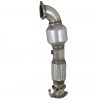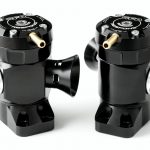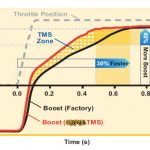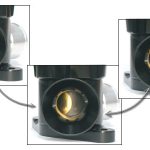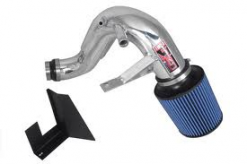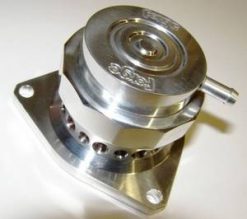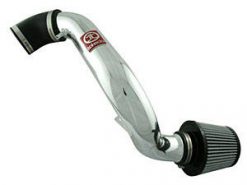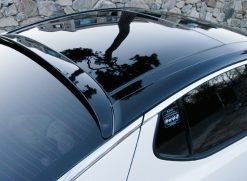Stinger Respons TMS T9012 adjustable bias venting diverter-BOV twin Valve Kit
$ 569.99
Part No. T9012
Respons TMS – Respons TMS – Direct Fit Kit(2 valves included) Blow off valves or BOV with GFB TMS advantage. Patented adjustable venting bias system diverter valve.
ALL THE PERFORMANCE WITH OR WITHOUT THE NOISE!
Give YOUR Kia Stinger the sound you want, and the performance to go with it!
The Respons TMS valves take the Hybrid dual-outlet concept a step further, featuring our patented Venting Bias Adjustment System. This unique feature allows you to infinitely vary how much air is recirculated or vented to atmosphere, like a volume control. Simply by twisting the adjustment ring, you can change the sound of your BOVs from silent to ear-shattering, or anywhere in between.
With over 20 years in the business of designing and manufacturing bypass and blow-off valves, GFB have learned a thing or two about managing boosted air, as well as the difference between a good blow-off valve, and a great one! Quality and performance are built into all GFB valves, so regardless of which of our kits you purchase, your investment will last a lifetime (which is why these products are backed by a lifetime warranty) and offer the best possible throttle response and boost holding that any bypass or blow-off valve could deliver.
Our range of bolt on kits for the Stinger offer many different options when it comes to venting sound, from silent to extremely loud, and anywhere in between. Because the Stinger does not use a MAF sensor, you can vent your BOVs to atmosphere without drivability issues such as backfiring or stalling.
Unbeatable quality, direct bolt-on fit, exclusive venting bias adjustment to control the sound, lifetime warranty, AND a performance benefit – that’s what we mean by Performance Without Compromise.
RESPONS TMS : SMARTER THAN A DUAL PORT BOV!
Atmosphere venting BOV won’t work on your car? Try a GFB Respons – you’ll be surprised!
Just another dual-port BOV?
On the surface it may look like just another dual-port blow-off valve,but the Respons is actually much more than that. Featuring GFB’s patented venting bias adjustment system, the Respons allows you to precisely control how much air vents from each of the two outlets.
Why is this so important? Two key reasons:
- Adjust how loud the blow-off sound is. Recirculate all of the air for silent factory operation, vent it all to atmosphere for maximum noise, or set it ANYWHERE in between to suit your preference.
- Get a blow-off sound WITHOUT causing stalling, backfiring, or any other BOV-related issues, even on a car with a sensitive airflow meter (MAF).
Hold on, it gets better. The Respons isn’t just a noise-maker. It also;
- Offers better throttle response
- Faster boost recovery on gearshift
- Unlimited boost-holding!
For example, using GFB’s TMS (Turbo Management System) principle, tests show that the Respons can return the engine to peak boost up to 30% faster than a factory diverter valve when shifting gears (more information below)
Twisting the adjusting ring opens up the atmo port, whilst the recirc port is simultaneously closed.This results in possible venting ratios ranging from 100% recirc, right through to 100% atmosphere and anywhere in between.
Available in a huge range of universal and direct bolt-on kits
When we say “bolt-on”, that’s EXACTLY what we mean. Everything you need is included, it fits directly in the factory location (not on a separate adaptor), and no modifications to the car are required.
Performance AND sound without compromise!
- Adjust the volume of your blow-off sound
- Up to 30% faster boost recovery on gearshift
- Get the blow off sound without the hassles – even on sensitive MAF-based systems
- Hold unlimited boost pressure
- Direct bolt-on kits available
Get the inside information…
GFB is no stranger to dual port BOVs. In fact, GFB pioneered the design in 1999, following up with the patented venting bias adjustment system in 2001.
This technology is not just a gimmick – it’s the key to getting a blow-off sound without the issues (unlike other valves), and is exclusive to GFB.
“I thought venting to atmosphere couldn’t be done on a car with an airflow meter, so how does the Respons do it?”
We’ve all heard the stories and seen people get shot down on forums when they ask about BOVs. Common responses are “your car will stall,backfire, run rich, go slower, or rip a hole in the space-time continuum that will bring about the end of the universe”. Certainly, if the BOV is not designed or adjusted correctly, at least some of these may be true.
When you vent a BOV to atmosphere, you’re letting air out of the system that has been measured by the airflow meter, so the ECU will continue to inject fuel for that missing air, hence the issues with over-fuelling that can occur.
However, by controlling HOW MUCH the valve vents, WHEN it vents, and for HOW LONG, the Respons can be configured to vent a portion of air to atmosphere at a time and of a volume that least affects the fuelling to the point where there are no negative side-effects.
Since our competitors do not have a means for adjusting the amount of air that is vented to atmosphere, they are unable to achieve the same success that a Respons does on even the most sensitive engines.
If everything you’ve heard tells you a BOV won’t work on your car, try a GFB Respons – you will be surprised!
“How does a GFB Respons improve performance?”
Boost holding
Unlike factory bypass valves, or other brand valves that require different springs for different boost levels, a GFB valve CANNOT be forced open by high boost!
The balanced piston design in a GFB valve uses boost pressure on either side to cancel out the forces. Therefore it doesn’t matter how much boost you run, you can be sure a Respons valve will deliver all of it to the engine.
Throttle response and boost recovery
GFB’s TMS (Turbo Management System) principle is based on an operating method that is different to all factory bypass valves, which can be summarised as:
A factory bypass valve is open until required to shut.
A GFB TMS valve is shut until required to open.
This difference in operating methods means that the GFB valve only vents when required, and only enough air to prevent compressor surge.
For example, during a gearshift it is possible to preserve a small amount of boost pressure for a short duration. Then, when the throttle is then re-opened, peak boost is reached faster than if all pressure is lost (as is the case with the factory valve that remains fully open too long).
Related products
2010-2016 Genesis Coupe 2T/3.8L Models
2003-2008 Tiburon
2010-2016 Genesis Coupe 2T/3.8L Models



